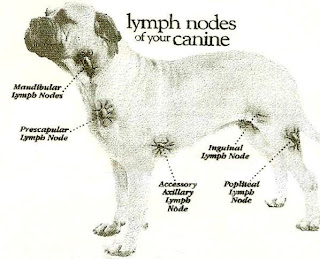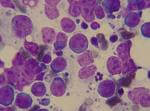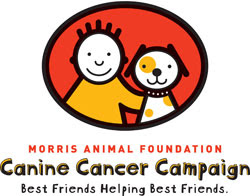New Trooper update!!
http://www.wusa9.com/news/local/story.aspx?storyid=91693&catid=187
Wednesday, September 30, 2009
Saturday, September 26, 2009
Trooper update
Trooper update! She is doing great and getting ready for the next step in her recovery.
http://www.nbcwashington.com/news/local-beat/Abused__Trooper__Makes_Recovery_Washington_DC.html
http://www.nbcwashington.com/news/local-beat/Abused__Trooper__Makes_Recovery_Washington_DC.html
Wednesday, September 23, 2009
Thursday, September 17, 2009
It's dog walk time!
2 Dogs, 2000 Miles has arrived in DC and it is time to get walking. Please come by Friendship tonight between 5:30 and 7:30 to welcome Luke, Hudson and Murphy to Washington. Then, tomorrow is the big day, we will be gathering at 10 am to begin our walk on the National Mall. Visit the 2 Dogs, 2000 Miles blog for details. I will be spending today polishing my speech and trying to remain calm about speaking in front of what I hope to be many, many people. I look forward to seeing you all out there!
Tuesday, September 15, 2009
Hemoabdomen
When Brady arrived at the hospital he was able to walk but was very weak. His gums were an extremely pale pink--almost white--and his abdomen was distended – the classic signs of a belly full of blood, also called a hemoabdomen.
My suspicion was confirmed when I inserted a needle into his belly and pulled back a syringe full of blood. Because Brady was losing so much blood into his abdomen, he needed help to support his cardiovascular system, so we immediately placed an intravenous catheter and started him on fluids. His red blood cell count was predictably low as was his blood pressure; we needed to start supportive care to help him oxygenate his organs. He was given oxygen and a medication called hetastarch to help bring up his blood pressure.
After I was comfortable that Brady was receiving the supportive care he needed, I headed into a room to have what is always a very difficult discussion with his owners.
The most common cause of a hemoabdomen is a bleeding tumor in the spleen. Though there is a small chance that the tumor is benign, it is much more likely that it is a very aggressive type of cancer called hemangiosarcoma, a cancer of the cells that line blood vessels.
Not only was it most likely that this was a malignant tumor, there was also a strong possibility that it had already spread to his liver or lungs. Even though x-rays of Brady’s lungs did not show any metastasis, there could be microscopic disease present that just hadn’t become visible on x-rays.
His owners had three options at this point:
1) They could choose to euthanize immediately, reasoning that the tumor was most likely malignant and that it had spread, so that even if we went to surgery and removed it, Brady would need chemotherapy to treat the suspected metastasis.
2)They could wait until the next day when Brady could have an ultrasound to see if there was any evidence of metastasis to the liver. If the liver was clean then we would proceed to surgery to remove the spleen. The problem with waiting was Brady risked sudden death if the tumor were to rupture.
3)Brady could go to surgery immediately to have the spleen removed. In surgery we would assess the liver for obvious metastasis. If any lesions in the liver were present this would indicate a very poor prognosis and we would recommend that he be euthanized while under anesthesia. If the liver appeared normal we would proceed and submit biopsy samples of the liver and spleen.
My heart always goes out to the owners when it is necessary to have this overwhelming discussion. There are multiple options with varied outcomes and they need to make a life or death decision for their dog with very little time to think. After much discussion, Brady’s owners elected for him to have the emergency surgery.
In surgery, Brady’s abdomen was filled with blood from a large bleeding mass in his spleen. Fortunately, his liver was normal in appearance, so we proceeded to remove the spleen as quickly as possible to prevent further blood loss. I also took a sample of liver tissue to submit along with the spleen for review by a pathologist. Despite his severe anemia, Brady did very well during surgery and his recovery from anesthesia was uneventful.
Now we had to wait for the pathologist to send back the results of the biopsy samples. Six days later Brady’s owners were given a very happy and unexpected surprise: The mass was the benign form of disease called a hemangioma, and the surgical excision was expected to be curative.
I was thrilled for Brady and his owners, especially because after treating my own dog for hemangiosarcoma, I would not wish it on anyone. Unfortunately, this is not the usual outcome when a dog presents with a hemoabdomen and it is always a gamble no matter what decision the owner makes.
My heart always goes out to the owners when it is necessary to have this overwhelming discussion. There are multiple options with varied outcomes and they need to make a life or death decision for their dog with very little time to think. After much discussion, Brady’s owners elected for him to have the emergency surgery.
In surgery, Brady’s abdomen was filled with blood from a large bleeding mass in his spleen. Fortunately, his liver was normal in appearance, so we proceeded to remove the spleen as quickly as possible to prevent further blood loss. I also took a sample of liver tissue to submit along with the spleen for review by a pathologist. Despite his severe anemia, Brady did very well during surgery and his recovery from anesthesia was uneventful.
Now we had to wait for the pathologist to send back the results of the biopsy samples. Six days later Brady’s owners were given a very happy and unexpected surprise: The mass was the benign form of disease called a hemangioma, and the surgical excision was expected to be curative.
I was thrilled for Brady and his owners, especially because after treating my own dog for hemangiosarcoma, I would not wish it on anyone. Unfortunately, this is not the usual outcome when a dog presents with a hemoabdomen and it is always a gamble no matter what decision the owner makes.
Thursday, September 10, 2009
Lymphoma
Lymphoma is the most common cancer that we diagnose in cats and dogs. Cancer is never good news, of course, but if there is a bright side, it’s that Lymphoma is by far the most treatable. It does however behave very differently in cats and dogs.
In dogs we usually see an enlargement in one or more of the peripheral lymph nodes such as those located under the jaw or on the back of the hind legs. In many cases, the patient won’t even feel sick at the time of diagnosis. In other cases, the patient will show general signs of weight loss, lethargy and anorexia.


Diagnosis is typically relatively non-invasive and done by sticking a needle into a lymph node to obtain cells. (This is called a fine needle aspirate.) Lymphoma can also present in the gastrointestinal organs such as the liver, spleen, small intestines or lymph nodes, lymph nodes in the chest, or sites such as the skin, nervous system and eyes.
Cats, on the other hand, are afflicted most frequently with gastrointestinal lymphoma, although they can also get the same organ involvement listed above for dogs. They present with general maladies such as decreased appetite, weight loss, frequent vomiting or diarrhea.
With cats, I recommend bloodwork first in order to rule out any underlying issues with kidney disease or hyperthyroidism. If the bloodwork is unremarkable then lymphoma or inflammatory bowel disease are at the top of my list of suspects.
Cats are not as easy as dogs to diagnose. The next step is an ultrasound, done by our internist Dr. McConnell, to visualize the abdominal organs. We often see thickening of the small intestinal walls, enlarged lymph nodes in the abdomen, changes in the liver or spleen. If possible, Dr. McConnell will do an ultrasound-guided fine-needle aspirate of everything except the small intestine. If it looks like the small intestine is involved endoscopy is recommended to obtain pieces of the stomach and small intestine to differentiate between lymphoma and inflammatory bowel disease.
Once lymphoma is diagnosed in both dogs and cats, we refer people to an oncologist for further diagnostics and treatment. It is necessary to stage the disease in order to figure out how far it has progressed and which specific type of lymphoma it is. The most frequent sites of metastasis are the lungs and liver. Therefore x-rays of the chest are taken and an ultrasound (if one was not done already) is performed to look for evidence that the cancer has spread.
Once the oncologist has determined exactly what they are dealing with, it is time to discuss treatment options and prognosis. If this is something you ever have to go through with your own animal, an oncologist will explain what treatments are available and what you can expect.
With cats, I recommend bloodwork first in order to rule out any underlying issues with kidney disease or hyperthyroidism. If the bloodwork is unremarkable then lymphoma or inflammatory bowel disease are at the top of my list of suspects.
Cats are not as easy as dogs to diagnose. The next step is an ultrasound, done by our internist Dr. McConnell, to visualize the abdominal organs. We often see thickening of the small intestinal walls, enlarged lymph nodes in the abdomen, changes in the liver or spleen. If possible, Dr. McConnell will do an ultrasound-guided fine-needle aspirate of everything except the small intestine. If it looks like the small intestine is involved endoscopy is recommended to obtain pieces of the stomach and small intestine to differentiate between lymphoma and inflammatory bowel disease.
Once lymphoma is diagnosed in both dogs and cats, we refer people to an oncologist for further diagnostics and treatment. It is necessary to stage the disease in order to figure out how far it has progressed and which specific type of lymphoma it is. The most frequent sites of metastasis are the lungs and liver. Therefore x-rays of the chest are taken and an ultrasound (if one was not done already) is performed to look for evidence that the cancer has spread.
Once the oncologist has determined exactly what they are dealing with, it is time to discuss treatment options and prognosis. If this is something you ever have to go through with your own animal, an oncologist will explain what treatments are available and what you can expect.
 The most important thing to keep in mind when treating cancer in animals is that our goal is not to cure. Instead, we want to prolong the animal’s life while maintaining a good quality of life. People are blasted with chemotherapy drugs to try and kill all of the cancer. This is why people get so sick. With animals, we administer lower doses of drugs with the intent to kill as many of the cancer cells as possible without making the patient feel bad.
The most important thing to keep in mind when treating cancer in animals is that our goal is not to cure. Instead, we want to prolong the animal’s life while maintaining a good quality of life. People are blasted with chemotherapy drugs to try and kill all of the cancer. This is why people get so sick. With animals, we administer lower doses of drugs with the intent to kill as many of the cancer cells as possible without making the patient feel bad.Having a pet diagnosed with any kind of cancer is scary and overwhelming, I hope this provides you with some helpful information.
Tuesday, September 8, 2009
So your pet has cancer - Now what?

As a pet owner who lost a dog to not one, but three types of cancer--lymphoma, melanoma and hemangiosarcoma--I know firsthand how devastating, confusing and overwhelming this diagnosis can be. The only possible shred of good news is that you have the warm, caring embrace of the Oncology Department at Friendship available to you.
Dr. Chand Khanna--who may just be the most amazing person I have ever met--leads this team of dedicated doctors and veterinary technicians. In addition to being double board-certified in internal medicine and oncology, Dr. Khanna runs multiple labs at the National Institutes of Health and founded Animal Clinical Investigation. Through these organizations he performs ground-breaking research in both animal and human cancer. Equally important, he is a personable, compassionate and caring individual. His entire team--including doctors Tony Rusk, Alexandra Sahora and Kristen Weishaar; his assistant Tracey; and the veterinary technicians Stuart, Rebecca and Amy--understands what a scary time this is for your and your pet.
Managing cancer is complex, expensive and at times confusing (even for me with Westin). Dr. Khanna and his team will go out of their way to answer all your questions and concerns and are always available to the emergency doctors at Friendship if something happens after hours. They do their very best to make treating your pet’s cancer as comfortable as possible for both you and your beloved pal.

Though most cancers in companion animals are, unfortunately, not yet curable, many are now treatable thanks to devoted doctors like Chand Khanna and organizations like the Morris Animal Foundation. We are making great advances in managing cancer in our beloved pets and one day we will find a cure. I treasured each day I had with Westin and consider myself blessed that she had Dr. Khanna and the oncology service at Friendship looking after her.
Thursday, September 3, 2009
Raising awareness for canine cancer one step at a time

Through the magic of Twitter I have recently been made aware of the organization 2 Dogs, 2000 Miles started by Luke Robinson when he lost his dog Malcom to bone cancer at the age of six. Like so many owners whose animals are diagnosed with cancer he was frustrated that we are still unable to cure this devastating disease. So Luke decided to hit the road with his dogs Murphy and Hudson and walk from Austin, Texas to Boston, Massachusetts to raise awareness about canine cancer.

As I was reading Luke’s story I couldn’t help but think of Westin and how hard she fought against her multiple cancers. I immediately volunteered to help and was honored when they asked me to speak at their Canine Cancer Caucus here in DC on September 18th. Luke’s goal is to bring awareness to the prevalence of canine cancer and stimulate interest in the funding of oncology studies. Friendship’s oncologist Dr. Chand Khanna will also be speaking about his work at the NIH and how finding a cure for canine cancer can lead us to better understanding of cancer in humans.

One in four dogs over the age of two will be diagnosed with some type of cancer. Though most cancers in companion animals are, unfortunately, not yet curable, many are now treatable thanks to devoted doctors like Chand Khanna and organizations like the Morris Animal Foundation. We are making great advances in managing cancer in our beloved pets and one day we will find a cure.
I am thrilled to be a part of this inspirational cause and hope that you and your dog can join us as we march on the National Mall Friday, September 18th. Friendship will be hosting an event Thursday the 17th from 5:30 to 7:30 pm to welcome Luke, Murphy and Hudson. We invite you to come by, enjoy some refreshments and say hello. Please visit www.2dogs2000miles.org or email dc@2dogs2000miles.org for more information.
Subscribe to:
Posts (Atom)







